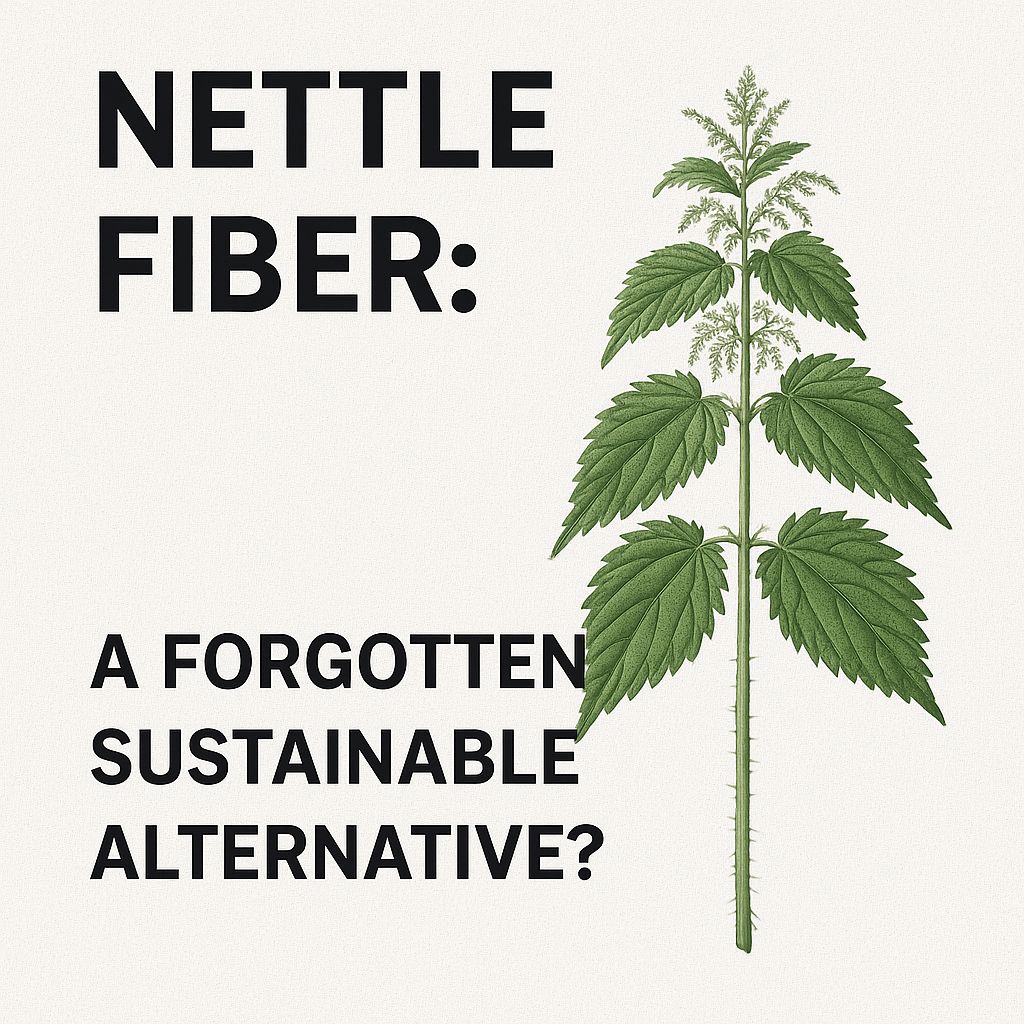

Ekorganix. Sustainable, Eco, Organic, Healthy
With a focus on Sustainability, Environment and Well-Being.
Nettle Fiber: A Forgotten Sustainable Alternative?
As conversations around sustainable fashion and eco-friendly textiles intensify, familiar fibres like organic cotton, hemp, and flax tend to dominate the spotlight. But what if an ancient, overlooked plant held the key to truly low-impact fabric? Meet nettle fibre—a forgotten champion of sustainability that's making a quiet comeback.
In this article, we’ll explore what nettle fibre is, how it compares to other natural fabrics, and why it might just be the next big thing in sustainable living.
What Is Nettle Fibre?
Nettle fibre comes from the stalks of the common stinging nettle (Urtica dioica), a plant once widely used in Europe and Asia for clothing and rope. The process of turning nettle into fabric is similar to that of flax: the stalks are retted (soaked and softened), broken down, and then spun into yarn.
Historically used before cotton became widespread, nettle was valued for its strength, durability, and natural luster. But with industrialisation and mass cotton production, nettle faded into obscurity—until now.
Why Nettle Fibre Is Incredibly Sustainable
1. Grows Wild with No Pesticides
Nettle grows naturally in the wild across Europe, Asia, and parts of North America. It thrives without fertilisers or pesticides, making it ideal for organic and regenerative agriculture. Unlike cotton, it doesn’t need intensive farming or monoculture fields.
2. Minimal Water Requirement
Nettle is a low-water crop. It grows in temperate climates and typically doesn’t require irrigation. That means it has a far lower water footprint compared to thirsty crops like cotton.
3. High Yield Per Hectare
Nettle can produce up to 6 tonnes of dry stem per hectare, yielding more usable fibre than flax or hemp in the same space. It’s efficient and scalable—if only more farmers grew it.
4. Biodegradable and Compostable
Like other plant-based fibres, nettle is 100% biodegradable, making it a zero-waste alternative when disposed of properly. Nettle-based fabrics decompose without releasing microplastics or toxins into the environment.
How Does Nettle Fabric Feel?
Modern processing methods have made nettle yarn softer and more wearable. Today’s nettle fabrics resemble linen or hemp, offering a lightweight, breathable texture with a naturally silky sheen. It’s suitable for clothing, towels, bedding, and more.
When blended with organic cotton or flax, nettle yarn enhances strength and longevity while reducing environmental impact.
Why Isn’t Nettle More Popular?
The biggest barriers are awareness and infrastructure. Unlike cotton or flax, nettle lacks large-scale industrial support. But as demand grows for truly sustainable textiles, this forgotten fibre is being rediscovered by eco-conscious brands, designers, and consumers.
Ekorganix: Rooted in the Power of Nature
At Ekorganix, we believe in reviving natural traditions with a modern, sustainable twist. That’s why we’re exploring the integration of nettle-based fabrics into our product range—because the future of sustainable fashion might just lie in the past.
Final Thoughts: Should You Choose Nettle Fibre?
If you care about zero-waste production, regenerative farming, and innovative eco-textiles, nettle is a fibre worth embracing. It’s strong, breathable, environmentally sound—and ready for a revival.
Don't overlook the nettle. Reclaim the forgotten fibre.
Ekorganix is an international team of sustainability enthusiasts entirelly dedicated to making items of organic linen, hemp, cotton and nettle. In this way, we contribute to better environment ethics and human well-being.
These socks are the BEST!!! For my whole life, I have worn socks to bed, but end up taking them off, because they are too heavy. A few months ago, my sister gave me a package of Ekorganix socks, and I am completely addicted to them. I wear them every single night - they are just perfect!
Ik ben onder de indruk van deze hennepsokken. De ervaring is een beetje vreemd maar aangenaam. Ze absorberen zweet zoals geadverteerd en de voeten zijn niet vochtig.
